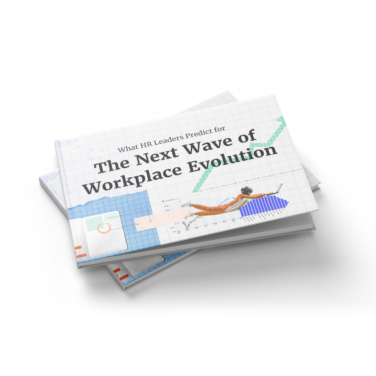
According to the Bureau of Labor Statistics (BLS), employee benefits for private industry workers averaged $12.77 per hour worked in December 2023. This works out to 29.6% of total compensation ($43.11 per hour).
Benefits packages are a significant cost to organizations, so why offer them? Here I’ll go into why employee benefits are important as well as some popular benefits and best practices.
What Are Employee Benefits?
Employee benefits are various forms of non-wage compensation provided to employees in addition to their normal wages or salaries. These benefits are a crucial part of an employee’s total compensation package and can significantly impact job satisfaction and employee retention.
Why Are Employee Benefits Important?
Chances are you know firsthand the impact that the benefits package can have on whether you choose to take or continue in a role or not.
It’s no secret that generous benefits help sweeten your employer value proposition. But attraction and retention aren’t the only reasons benefits are important.
Compliance
In many territories, certain benefits are mandated by law. Examples in the U.S. include social security, workers’ compensation, and sometimes health insurance. Providing these benefits is essential for compliance with legal and regulatory requirements.
Productivity
Benefits such as health insurance, mental health services, and wellness programs can help support employees’ overall health and well-being. This can lead to reduced absenteeism and increased engagement and productivity.
Diversity and inclusion
Tailoring benefits to meet the diverse needs of a varied workforce can foster a more inclusive and equitable workplace, which is increasingly important in a global market.
Attraction and retention
Last but not least, benefits can have a significant impact on attracting new talent and retaining existing talent.
An employee retention survey we ran a couple of years ago found that an inadequate compensation package was a reason to leave for 43.8% of respondents.
While not the be-all and end-all, it’s clear compensation is still a major motivating factor for most people when it comes to choosing and staying in a job.
Potential Drawbacks Of Employee Benefits
While benefits plans are mostly advantageous to organizations and workers, there are some potential drawbacks to be cognizant of.
Risk of dependency
Employees may become overly dependent on employer-provided benefits such as health insurance or retirement savings plans. This dependency can make it difficult for employees to change jobs or retire which can lead to employees staying longer than they really should.
Perceived inequality
Offering different levels of benefits to different groups of employees (e.g., full-time vs. part-time) can lead to perceived or real inequities within the workplace, affecting morale and teamwork.
Potential for abuse
Certain benefits, like sick leave or flexible working arrangements, might be susceptible to abuse by a small number of employees. This abuse can lead to additional costs and potentially create resentment among other employees.
Which Benefits Are The Most Important?
I’ll begin this section by saying that discovering which benefits are most important to employees at an organization requires a mixture of asking them through surveys etc, analyzing the data around utilization, and benchmarking against industry standards.
That being said, when we break down the costs of employee benefits, most of the spending goes into health insurance, vacation, and paid leave benefits as these take precedence for the majority of workers.
| Component | Cost(2023) | % of total benefits | Cost(2022) | % of total benefits |
| Insurance | $3.14 | 24.6% | $2.93 | 25.7% |
| Legally required benefits | $3.17 | 24.8% | $2.91 | 25.5% |
| Paid leave | $3.26 | 25.5% | $2.88 | 25.2% |
| Supplemental pay | $1.71 | 13.4% | $1.37 | 12% |
| Retirement and savings | $1.50 | 11.7% | $1.33 | 11.6% |
Employee Benefits Best Practices
Employee benefits planning is no mean undertaking. As with most projects employee-related, it’s good practice to delve into the data and get their input as much as you can.
Follow these best practices to develop a competitive benefits package that’s right for your organization.
Use employee feedback to cater benefits to your workforce
Using employee feedback to tailor benefits to the workforce is a strategic approach that can significantly enhance job satisfaction and retention.
- Benefit utilization data: Analyze data on the usage of current benefits. Low utilization of certain benefits might indicate they are not valued or well-understood by employees.
- Surveys and questionnaires: Conduct employee surveys or questionnaires to gather insights on employee satisfaction with the current benefits package and suggestions for improvements.
- Benchmarking: Compare your benefits package with industry standards and competitors. Employee feedback can be used to identify areas where your organization falls short or could differentiate itself.
Make benefits inclusive
Making employee benefits inclusive involves designing and offering a benefits package that caters to the diverse needs of all employees.
- Diverse employee input: Actively seek input from employees of various ages, genders, ethnicities, and other backgrounds to understand different needs and preferences.
- Cultural competence in benefits administration: Ensure that those administering benefits are trained in cultural competence to effectively support all employees. Modern benefits administration software can help here.
Make personalization easy
Personalizing employee benefits can greatly enhance their value and appeal to a diverse workforce. Here are ways employers can make benefits personalization easy and effective and stay up to date with the latest trends in benefit offerings:
- Flexible benefits plans: Implement a flexible benefits plan that allows employees to choose from a variety of options. This can include a ‘cafeteria plan’ where employees allocate a set amount of benefit dollars to the options they prefer.
- User-friendly technology platforms: Utilize technology platforms that allow employees to easily view, select, and change their benefits. Ensure these platforms are intuitive, accessible, and provide clear information about each option.
- Regular communication: Keep employees informed about their benefits through regular, clear communication. Use various channels like emails, intranet, webinars, or town hall meetings to ensure everyone understands their options.
Communicate about benefits regularly
Regular communication about employee benefits is crucial for ensuring that employees are aware of and understand the benefits available to them.
- Welcome kits for new employees: Provide comprehensive benefits information in welcome kits for new hires. This should include detailed descriptions of all benefits, how to enroll, and who to contact for questions.
- Regular email updates: Send periodic emails updating employees on any changes or additions to the benefits package, reminders about enrollment periods, and tips on how to make the most of their benefits.
- Intranet or employee portal: Maintain an up-to-date section on the company intranet or employee portal where all benefits information is readily available, including FAQs, contact information for benefits providers, and instructional videos.
Measure and monitor benefits usage
Employers can measure and monitor the usage of employee benefits effectively through various methods.
- Data analysis and reporting: Utilize your benefits/compensation management software to track enrollment numbers and usage rates of different benefits. Regularly reviewing this data can provide insights into which benefits are most and least popular.
- Utilization reports from vendors: Request regular utilization reports from benefits providers. These reports often include detailed statistics on how employees are using the benefits, such as claims data for health insurance or participation rates in retirement plans.
- Cost analysis: Monitor the costs associated with each benefit. Comparing the costs to the utilization and perceived value can help determine the return on investment (ROI) of each benefit.
For more employee benefits insights, join our supportive community of HR and business leaders sharing knowledge and best practices to help you grow in your career and make greater impact in your org.
Discover more from reviewer4you.com
Subscribe to get the latest posts to your email.



